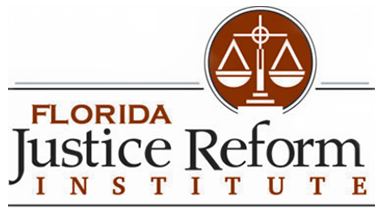|
Florida High Court Upholds Slashing of Punitive Damage Award in Tobacco Case By William Rabb | January 8, 2023
The Florida Supreme Court has struck down $16 million in punitive damages against R.J. Reynolds Tobacco Co. as “excessive,” a decision that could bode well for insurers and businesses relying on courts to interpret state law strictly as written. “Text matters,” said William Large, president of the Florida Justice Reform Institute, which filed an amicus brief supporting the tobacco company’s side in the case. “This is a victory for textualism. It’s important for all civil justice cases.” Florida law dictates that punitive damages can be no greater than four times the compensatory damages awarded in a lawsuit, in most cases. At the time that this case, Brinda Coates vs. R.J. Reynolds, was heard at trial, the statutory ratio was 3:1. An Orange County jury granted $150,000 to the family of a woman who died after years of cigarette smoking, but then awarded $16 million in punitive damages – more than the plaintiff had asked for. That was a ratio of 107 to 1 – far out of line with the Florida statute, Reynolds and amicus briefs argued. The Florida 5th District Court of Appeal last year agreed and remanded the case back to the trial court. But it also asked the Supreme Court to weigh in on when, exactly, courts can agree to a request to trim hefty punitive amounts.
The named plaintiff is the sister of deceased smoker Lois Stucky, and represents Stucky’s estate and grown children. Coates’ attorneys argued that Florida law gives juries and courts wiggle room to allow higher punitive amounts in some circumstances. Consideration in this case should be given to the fact that Stucky’s suit began as a wrongful-death case and under the vagaries of Florida law, compensatory damages in those cases can be somewhat limited for surviving family members. That artificially limits punitive damages, the plaintiffs argued. The majority of the justices disagreed, noting that the ratio rule is no different in death cases, and that the trial court had erred in allowing the $16 million as punishment. “In this case, because no reasonable trial court could have found that the $16 million punitive damages award bears a reasonable relation to the $150,000 net compensatory damages award and the injury suffered by Ms. Stucky’s survivors, the Fifth District correctly reversed the excessive punitive damages award and remanded for further proceedings,” reads the Supreme Court majority opinion, written by Justice Ricky Polston. The trial court now can allow no more than $450,000 in a punitive award, in keeping with the 3:1 ratio. On the surface, the Coates decision may seem to fly in the face of other states’ courts that have upheld large awards against tobacco companies and that of a six-year-old opinion by the Florida Supreme Court. In Schoeff vs. R.J. Reynolds, the Florida justices in 2017 affirmed $30 million in punitive damages for the family of a smoker who died. In that case, though, the jury had allowed $10.5 million in compensatory damages, keeping the punitive amount within the three-to-one ratio. Coates’ attorneys, including John Mills, of Jacksonville, noted that the compensatory damages in Schoeff were based on different circumstances, and the two cases give R.J. Reynolds different punishments for the same deadly offense. “The sole reason for this disparity had nothing to do with RJR’s conduct or circumstances; the district court found that the ‘actual dollar amount of the punitive damage award’ was not excessive and was fully supported by RJR’s misconduct,” Coates’ lawyers, including John Mills, of Jacksonville, wrote. “Nonetheless, it held that the law required RJR receive substantially less punishment for killing Ms. Stucky than for killing Mr. Schoeff, based solely on the amount of the compensatory damages awarded to their respective survivors.” In Schoeff, the deceased smoker left behind a spouse, resulting in higher compensatory damages. In Coates, the victim was divorced and had no spouse or young children. In a sharp dissenting opinion in Coates, Justice Jorge Labarga said the majority’s decision essentially mocks the rationale behind punitive damages and undercuts a jury’s deliberations. “As a result of today’s decision, a Florida jury’s verdict … will be drastically reduced to a fraction of what the jury determined that the circumstances of the case warrant,” Labarga wrote. “This drastic reduction is attributable to the majority’s analysis of the rephrased certified question, an analysis that unreasonably concludes that the decedent’s death is not a cognizable injury for purposes of punitive damages claim.” Labarga argued that relying on the quirks of the state’s wrongful-death statute, which has its roots in 1840s case law in England and does not consider a death to be an injury for the purposes of allowing damages to survivors, was a “strained interpretation.” “The majority’s interpretation raises the question: when evaluating punitive damages in a wrongful death case, how can a decedent’s death not be a cognizable injury,” Labarga wrote. “The Wrongful Death Act, with its focus on compensatory damages, should not be read to limit the type of injury cognizable in determining punitive damages.” Higher punitive damages are needed to hold R.J. Reynolds fully accountable, he added. The majority’s interpretation puts Florida courts in the position of supporting higher damages for injuries than for deaths. A Florida law professor, not known for agreeing with Florida’s conservative high court, said in this case Labarga is wrong.
“Although I am usually quite critical of the Florida Supreme Court, this time it is right,” said Robert Jarvis, who teaches constitutional law at Nova Southeastern University in Fort Lauderdale. “LaBarga wants to introduce a distinction into Florida’s wrongful death statute (between compensatory and punitive damages) that simply does not exist – but would be very helpful for litigants like Coates if it did.” State lawmakers could remedy the oddity by amending the wrongful-death statute to include a death as a measure of damage, he noted. Jarvis disagreed with the sentiment that the Supreme Court can now be considered a “textualist” court, given to strict reading of the Legislature’s language and intentions in drafting laws in all matters. He noted that the court in other cases has found ways to work around statutory or constitutional language. The justices, for example, allowed the recent nomination of Justice Renatha Francis to be delayed so that she could meet the Florida Constitution’s 10-year Bar membership requirement. “What this court is, instead, is a hard-right/pro-business court,” Jarvis said in an email. “In Coates, textualism gave the court the decision it wanted. Had textualism not done so, however, I believe the court would have found another reason to vote the way it did.” The Coates decision is not directly related to property and liability insurance. The R.J. Reynolds corporation is largely self-insured, and punitive damages generally are not covered by liability insurance policies, anyway. But the ruling could have an impact on insurers in that it could reduce the threat of excessive punitive damage awards and, perhaps, extra litigation in some pending and future cases. Concerns about large verdicts have in often incentivized insurers to press for settlements in litigation, putting them at odds with insured business owners who may want to go to trial, Large and other attorneys have said. The decision could also prompt defendant corporations to ask courts more often for what’s known as “remittitur,” or a reduction in punitive damages. Strict interpretation of the text of statutes and insurance policies has been a factor in a number of significant court rulings in recent years — ones that were mostly in favor of insurers. In June, Florida’s 4th District Court of Appeal found that a contractor in an assignment-of-benefits claim did not provide an itemized, per-unit cost estimate of the services to be performed in the restoration, as required by law. In late 2021, the same court found that policy requirements must be adhered to: A homeowners policy limited payouts on emergency mediation work to $3,000, unless a request was made to exceed that. Also in 2021, the 3rd District Court of Appeal sided against an AOB contractor and held that an HO policy required the signature of both spouses and the mortgage lender. https://www.insurancejournal.com/news/southeast/2023/01/08/702390.htm |



 Large
Large